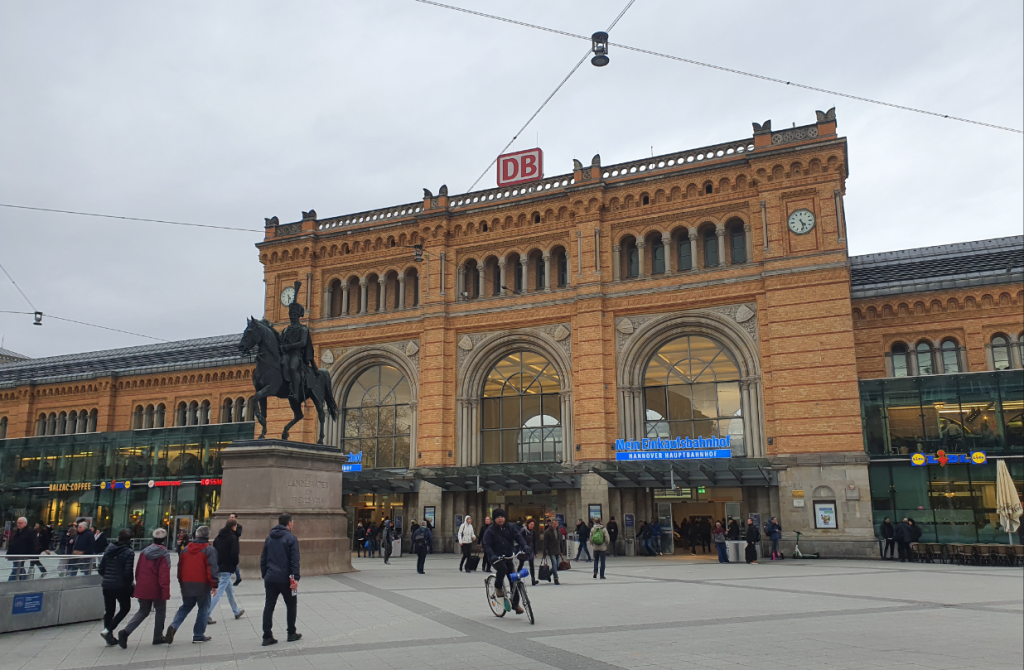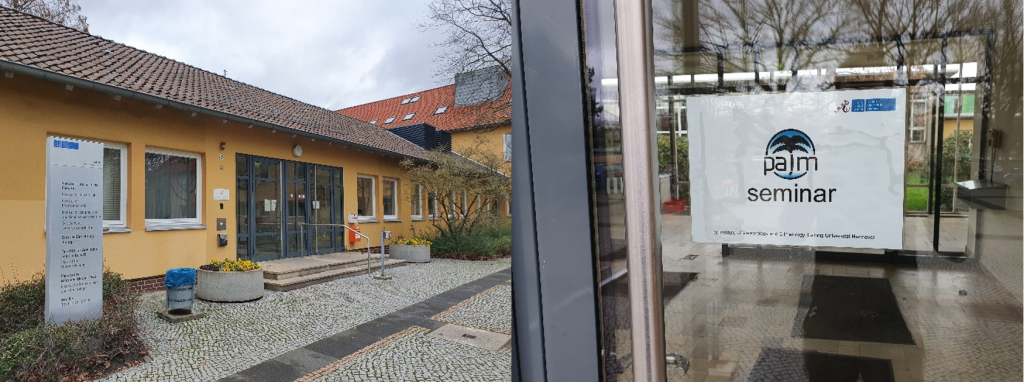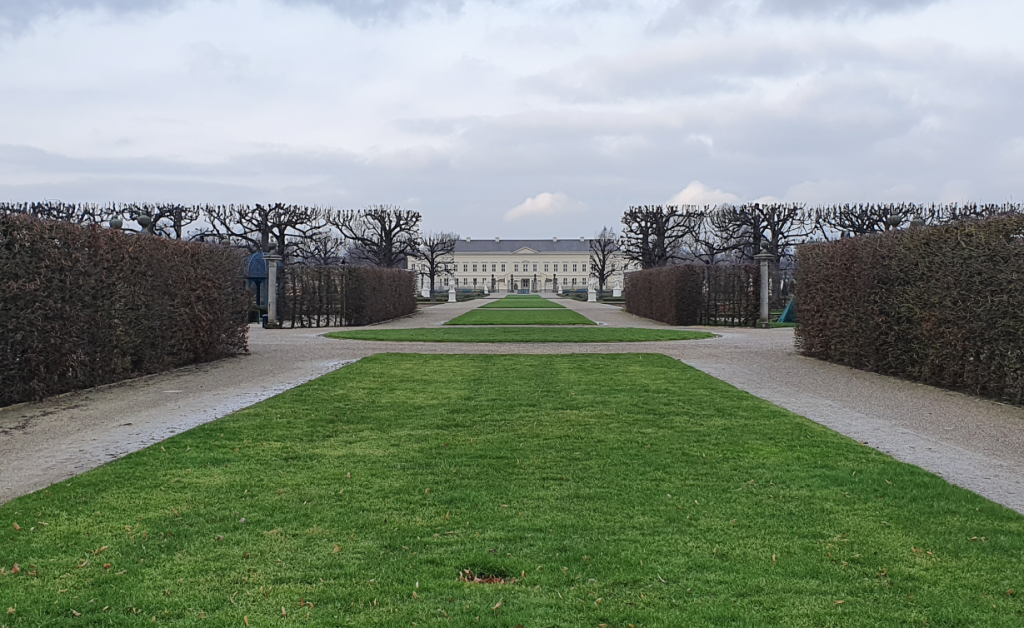Navigation menu
- Education
- Emissions & Air Quality
- Infrastructure & Services
- Meteorology & Climate
- News
- Physical Chemistry
- Projects
- The Team
A Visit to the Urban Climate Simulation Capital
I had the pleasure of attending the PALM-Seminar 2020, probably the one which has attracted the largest number of attendees so far. Find out in the following article how it went.

In the beginning of February, I was given the opportunity to attend the PALM-Seminar at the Leibniz University in Hannover. PALM is a Large Eddy Simulation weather model specifically made for microscale simulations of the planetary boundary layer and urban climate. Although there has been quite some work at the Center for Aviation with PALM already, mostly in the scope of two semester projects and my Master Thesis, I was extremely excited to be able to attend this seminar. The PALM-Seminar is intended to give an insight into technical details about the model, how it is operated and how output is interpreted. But my main motivation for attending was my conviction that there is no better way to learn something than being on site with the experts and asking “stupid” questions or clarifying things that are done in a certain way, because of just not knowing any better.
For that, I started my journey on Sunday, February 9th, from Winterthur towards Hannover. Having studied Aviation at the ZHAW, I love taking a plane to get around. However, the increasingly widespread discussions about the environmental responsibility of each and every one of us did not leave me unscathed. So, I gave the Deutsche Bahn a try. A few days before the trip, the storm Sabine was announced to have a huge impact on Europe, starting in Germany on the very Sunday I was intending to travel. On the day of travelling, I nervously took an earlier train than originally booked, only to learn in Zurich that it never got past Basel on its way into Switzerland. A short run later, I was in the Interregio towards Basel SBB, where I learned on arrival that it never even made it there either; another train was waiting in Basel Badisch Bahnhof. A short tram trip later, I sat in my reserved seat in the ICE. Anxiously awaiting what the travel gods might throw my way next with the approaching storm Sabine, I could not really relax. But, all worrying was for nothing, I arrived in Hannover with the usual 15 min delay. Fun fact, my originally booked train arrived in Hannover without any delay or problems.

Other participants didn’t make it though. At 18:00, the DB stopped all long distance trains in major train stations due to the weather. My summary from a traveling point of view – I am happy I took the train, because the flights on that day to Hannover were cancelled. However, while the seats might be a bit more comfy and leg space be more generous in the train – having to sit in them for seven hours compared to an hour on the plane definitely takes a toll. Yet, it would have been ironic not to make it to a weather model seminar due to weather.
On Monday morning, the seminar started. Unfortunately, 18 people did not make it to Hannover in time for the first day due to cancelled flights and the Corona virus outbreak in China, nevertheless a lot of people attended the seminar. The first day was already very interesting. It started with a repetition of LES theory and its application with valuable tips here and there, which one would not learn from looking at the lecture slides alone.

Monday’s exercise covered the very basics from the installation of PALM to a simple, flat-terrain simulation. As someone who has done both quite a few times already, I spent the time helping others and toying with parameters. The day ended with a get-together apéro at the Institute for Meteorology and Climate with interesting conversations about PALM and other people’s intentions in their PhD projects and planned applications. The majority of attendees are part of the German UC2-Project (Urban climate under change), which is ongoing at multiple German universities and weather services.
Day two continued with lectures about the numerics, boundary conditions and code parallelization paradigms applied in the PALM model system, giving a thorough insight about why things are done in the way they are. A lecture about the topography implementation in PALM was naturally of big interest to me, and judging from the amount of questions that arose from the audience, it was of general interest. Surely, the ability to resolve topography on a Cartesian grid is one of the attractive features of PALM. For me, the highlight of the day was a quick talk with Helge, who is part of the PALM team and is working on gust and fog modeling near airports. Seeing what is possible regarding gust and especially fog modeling with PALM, while still under development as part of his PhD project, was amazing. The expectation of having fog modelling implemented in PALM in the future, opens new interesting fields of applications for PALM. Exciting times are ahead.
On the third day, the topics presented were totally new to me: we focused on user code and on the wind turbine model. The ability to supply individual user code is a strength of PALM. This offers new possibilities for prognostic equations or it can simply be used to program special output variables. I was especially impressed by the possibilities the user has when applying the wind turbine model. PALM employs an actuator disc model with rotation, allowing the user to individually define the geometry of the blades used in the model. That includes the airfoil positions along the blade span, providing lift and drag polars etc. Compared with a simple actuator disc model, this results in the up- and downward motions in a turbine wake to be captured in the simulated flow field. Very neat.

Day four and day five were reserved for the various modules that PALM has to offer. The Land Surface Model, Urban Surface Model, Plant Canopy Model, Radiation Models are all essential models, or modules respectively, when trying to simulate the complex urban environments of today’s cities. The sheer amount of work that went into these models is amazing. Facades of urban buildings can be parameterized by no less than 136 parameters – luckily, there are bulk parameterizations available, as getting all these data is almost impossible for individual projects, if it’s not a big one. In that sense, it is obvious that all these efforts are being made in the scope of the UC2 project for simulating urban climates in German cities for which work is done towards getting all these data more or less available.
Day four was personally extremely helpful, as the exercises of today dealt with creating a user defined variable for output. While PALM allows outputting many variables already, some that would also be conveniently calculated online while running the simulation have to be implemented by the user himself. For me, not knowing Fortran all that well, it was a challenge just to create a simple output variable for horizontal wind speed – but once the general structure is known, it is already much easier. A very helpful exercise indeed. This was done in the context of an exercise applying the land surface model, in which also a diurnal cycle with dew formation during night was simulated.
The last day brought some more information regarding the chemistry model implementation, which is available in PALM. Multiple chemistry mechanisms can be created with a PALM-specific implementation of the Kinetic PreProcessor, which is a widespread tool in atmospheric chemistry models and also used in WRF-CHEM. Various chemistry mechanisms are already created and readily available for use in PALM. For example, a photo-stationary state with the three compounds NO, NO2 and O3 (+ a passive tracer, PM10) or a photochemical mechanism for smog. Together with PALM, it will be possible to do emission simulations on building block scale, which is very innovative. Right now, surface emissions are implemented, with point sources planned to be implemented in the future. This will be interesting for our group as well. It will be interesting to see how and if it can be applied also to aircraft emissions.

An exercise and some interesting discussions with other attendees later, the good-bye lecture took place. The lecture outlined what we learned during the week, and what we did not learn – there is no way to present the whole model system in just one week. An outlook into future features was given as well, which was quite a long list in the end. We will probably be getting a new output module in 2020, alongside an immersive boundary condition, allowing smoother topography than what is implemented the current castellated approach. But what was extremely exciting for me to hear, was that a way to run PALM in the cloud is being worked on. This may potentially be a huge blessing to operating PALM in the field regarding now-casting. All in all, exciting times are ahead of us.
As I’m sitting now in the train, home bound, I can’t help but reflect on the last week in Hannover. It has been an exciting, eye-opening week and it was amazing to see and hear what people are intending to do with the simulation model that I had the pleasure of learning from scratch in the last year in near-isolation from other like(palm-)minded people. It was extremely interesting to hear from people who are dealing with similar issues like me, for example with input data processing or data acquisition, and learn from their approaches and get new ideas about how to do things differently. Contact info with partners in crime from various entities were exchanged – the PALM community is definitely alive. I realized that the potential of the model is huge. With the prospect of it turning into a community model at some stage in time, PALM might have a bright future ahead of it. It is now up to us to do thorough, interesting work and try to apply PALM in areas it is intended for and produce meaningful results.